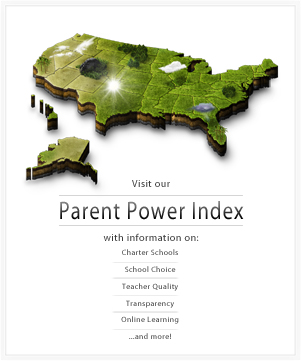Forecast for Blended Learning
As our society becomes increasingly more technological, the best in the education field are coming up with innovative ways of using technology to improve student learning. One of these is blended learning.
Blended learning experts Michael Horn and Heather Staker note in THE Journal Magazine how they predict blended learning programs will evolve in 2013, and even throw in an important new years wish at the end of the list.
Here are the 10 Predictions for Blended Learning in 2013:
1. More Rotation Models at the Elementary School Level
Station rotations have existed in elementary classrooms for decades, so incorporating an online station is a natural fit. Early proof-point schools, such as KIPP Empower and Rocketship Education, have run successful Rotation models for enough years now to offer helpful blueprints.
2. More Self-Blending at the High School Level
Millions of students already take at least one online course to supplement their traditional courses. Next year we expect to see even more self-blending as states implement policies to require online coursework (Alabama, Idaho, Florida, Michigan and Virginia) or to fund course-level choice (Florida, Utah, Louisiana and others).
3. More Flex-Model Prototypes
Transitioning from a traditional program to a Flex model involves significant restructuring of human resources and operations. Many districts and charter-school networks are starting to feel the need to at least get their feet wet. Expect to see many prototype schools emerge next year.
4. Growth in Enriched-Virtual Models Among Full-Time Virtual Schools
Many virtual schools appear to be finding that their models generate lackluster results among at-risk students. Expect them to take a page from the “no excuses” charter schools by integrating backward and doing more of what families used to do to help those students succeed. To do this, more full-time virtual schools will offer brick-and-mortar components to shore up results among that population.
5. Software with “Groupinator” Functionality
Scholastic’s Read 180 Program includes a “Groupinator” tool that recommends optimal small groups for differentiated instruction. Education Elements provides a similar solution with its Hybrid Learning Management System (HLMS). As blended learning grows next year, more software companies will translate student data into actionable intervention suggestions for teachers.
6. Tablets Gaining Disruptive Traction
The biggest drawback to replacing PCs with tablets has been that tablets are great at consumption but lousy at creation. But successful disruptive innovations always get better over time. Next year, chances are that even more classrooms will opt for the portability and relative affordability of tablets as the device of choice.
7. MOOCs Disrupting Advanced Placement Courses
Massive Open Online Courses (MOOCs) are becoming hugely popular at the higher education level (see Coursera, edX, and Udacity). Advanced middle and high school students are increasingly eyeing the chance to take physics from MIT or Shakespeare at Harvard. Next year this trend will accelerate.
8. Clashes Over Teacher Policies.
Debates are brewing over how best to ensure teacher quality in blended-learning environments. The top-down approach is to legislate dedicated dollars for professional development and more specific teacher evaluation systems. A more innovation-friendly approach is to increase flexibility at the local level for school leaders to use funds to train and compensate teachers according to individual circumstances. This debate will become a bigger deal in 2013 as more states note an increase in blended-learning schools.
9. Increased Emphasis on “Learning To Do”
As online learning takes over some of the job of helping students learn to know, the new buzz is over how blended environments can deliver the other half of the equation–learning to do, or the application of knowledge. The 20 grantees of Next Generation Learning Challenges awards stand out for their emphasis on hands-on learning experiences. Plan for growth in organizations like Educurious and Hackidemia that offer compelling maker curriculum.
10. More Cramming of Technology into the Existing Model
In many quarters we’re seeing schools buy technology for technology’s sake, and it ends up collecting dust in the corner or contributing little to student outcomes. Our New Year’s wish is for leaders to champion blended learning exclusively for the sake of students. Designing a student-centric system is the key to making next-generation learning designs enticing for the people at the heart of the issue–kids.










